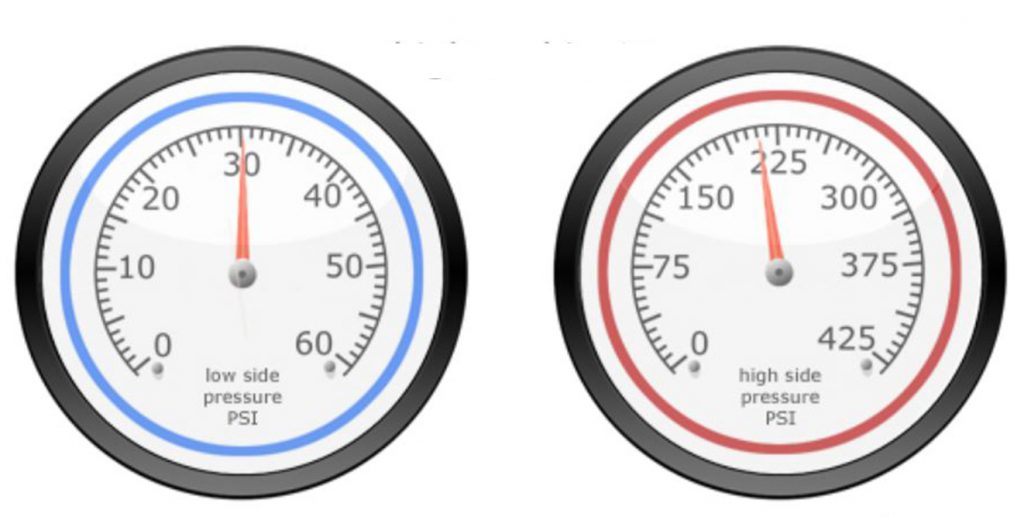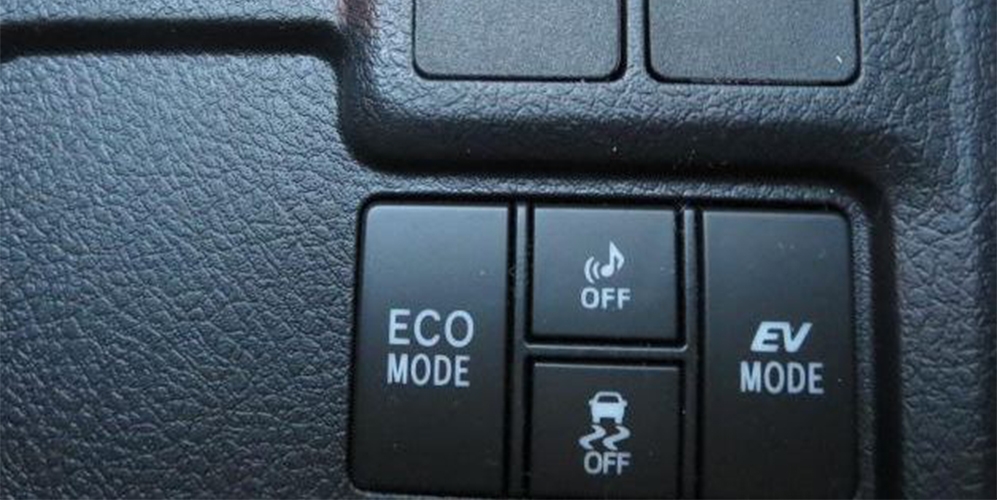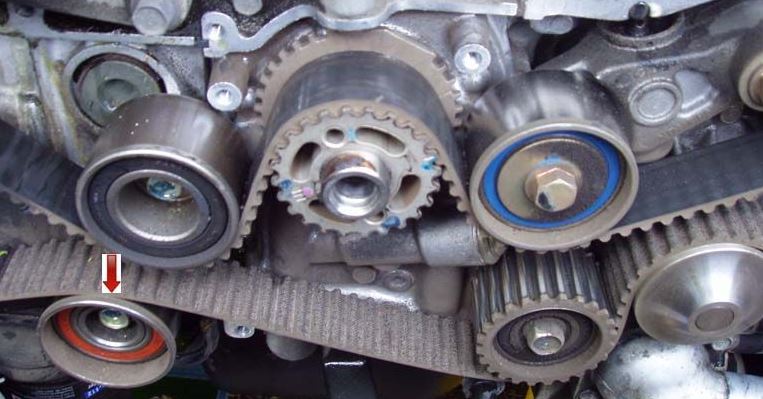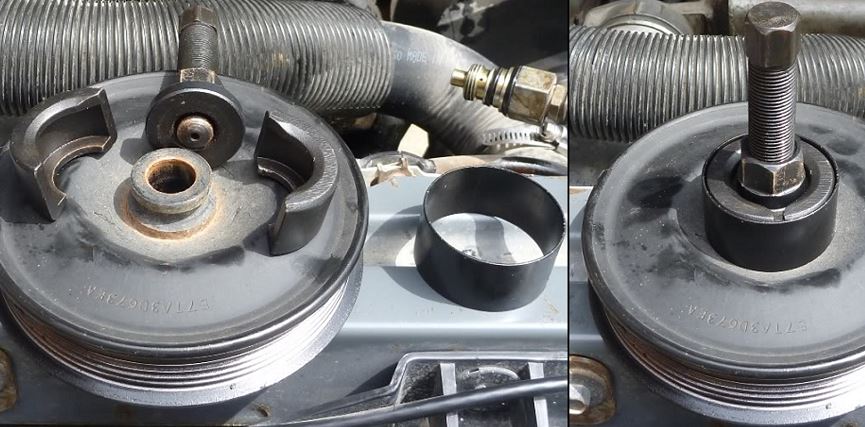Last updated on January 20th, 2023 at 05:15 pm
Many drivers are used to buying coolants to top up their car’s AC system, and they later observe that the gauges that come along are unreliable.
They might often read incorrect pressures, or sometimes the gauges may even seem to freeze, which might make you inaccurately read the level of coolant you put inside the AC system.

This is why you need professionals to do this, as they will ensure accurate readings and avoid problems while refilling the AC system.
In this article, I will discuss the overcharged ac system gauge readings, how you know if your car ac is overcharged, what are the symptoms of an overcharged AC system, can overcharging car AC damage the compressor, how to bleed off an overcharged car AC, how to fix overcharged ac and finally what should ac pressure be with the engine off. So with those in mind, let’s get started.
Related article: 3 Ways To Know How Much Gas You Have With a Broken Fuel Gauge
Overcharged Ac System Gauge Readings
Any A/C system that’s properly working should read 150 PSI when on the high side, while 30 PSI on the low side.
Below is the list of pressure readings your car A/C:
- If it shows 250 PSI / 30 PSI, it means you have air somewhere in the system.
- If it shows 250 PSI / 50 PSI, it means the condenser is not cooling, and the system is overcharged. Meaning the condenser may be blocked.
- If it shows 225 PSI / 80 PSI, it could be that the expansion valve is likely to open too wide. This could also mean you have lots of refrigerant in the system.
- If it shows 200 PSI / 70 PSI, it means that there is some blockage in the system, which might be either before or at the expansion device.
- If it shows 160 PSI / 10 PSI, it means that the evaporator could be frosted, has a faulty low-pressure pipe, or a clogged expansion valve.
- If it shows 150 PSI / 30 PSI, it means that there is water in the system.
- If it shows 150 PSI / >10 PSI, it means that there could be a leakage somewhere in the system or your expansion valve might be stuck open.
- If it shows 125 PSI / 30 PSI, it means the system might be uncharged, or there’s too much oil in the compressor.
- If it shows 100 PSI /100 PSI, it means you have a burnt coil or your compressor is not engaging due to insufficient power coming to it.
- If it shows 50 PSI / 50 PSI, it means the clutch is not engaging.
Related Article:
How Do You Know If Your Car Ac Is Overcharged?
Any AC system that’s properly working should be able to come up immediately after the button is pressed. But in case the vehicle has been off for a while, the AC system might start between one to two minutes.
However, anything beyond two minutes could mean that the AC system is broken or will soon be. Below are how to know if your car ac is overcharged.
- Faulty Cooling
- Noisy or Broken Compressor
- High Pressure
- Failing Engine
What Are The Symptoms Of An Overcharged AC System?
You need to verify if your car AC has been overcharged before fixing it.
Here are few symptoms of an overcharged AC
- Inefficient Cooling
- Compressor Noise
- High Pressure Readings
- Struggling Engine
- Broken Compressor
- Ice buildup on the evaporator coils,
What should ac pressure be with engine off
When your car engine is off the acc pressure on the low sides will usually be at around 25 to 40psi and sometimes the high side can up to about 200 psi.
Can Overcharging Car AC Damage Compressor
Anytime you overcharge your AC, it could cause permanent compressor failure, which happens to be the pump for the refrigerant.
It also means that the change from liquid to gas will not happen, meaning that the compressor will begin to produce liquid coolant instead of gas.
This is because it will be working extremely hard to pump the excessive coolant through the lines.
How To Bleed Off An Overcharged Car AC
One of the best ways to bleed off an overcharged car AC is to handle the AC carefully. This is because the refrigerant needs careful maintenance.
So to do this, just ensure you create a vacuum on it, and then carefully eliminate the Freon from the AC.
Once the Freon is eliminated, then you can put it to a closed container, and it will help AC dispose of it properly.
How To Fix Overcharged Ac
An Overcharged Ac is usually due to too excess refrigerant being added to the system, which can lead to various issues, such as poor cooling, ice buildup, and even damage to the compressor. Here are some of the steps to fixing an overcharged AC and getting it back to its optimal performance so you avoid damaging other parts.
Refrigerant is known to be a very dangerous chemical. I advise you to get an auto mechanic to help take some of the coolants out from the system and return the AC to its normal pressure.
1. Identifying the Problem
The first step in fixing an overcharged AC is identifying the problem. And just as shown above, some of the Signs of an overcharged ac system include poor cooling, ice buildup on the evaporator coils, and high-pressure readings on the gauges. If you suspect your AC is overcharged and have zero experience, I will recommend you have a professional mechanic inspect the system before attempting any repairs.
2. Removing the Excess Refrigerant
Once the problem has been identified, the next step is removing the system’s excess refrigerant. This should only be done by a licensed HVAC technician, as it requires specialized equipment and knowledge of the refrigerant system. However, if you wish to do you do yourself then watch this video for a guide.
3. Checking the System for Leaks
Removing the excess refrigerant is just the first step; it’s important to check the system for any leaks that may have caused the overcharge in the first place. Leaks can occur in various parts of the AC, such as the compressor, evaporator coils, and refrigerant lines. These leaks must be located and repaired before adding refrigerant to the system.
4. Recharging the System
After the leaks have been repaired and the excess refrigerant has been removed, the system can be recharged with the proper amount of refrigerant. This process is done using a refrigerant charging station and requires a proper measurement of the refrigerant charge.
Conclusion
Putting too much coolant in your car AC won’t make it cooler. Some of the results of adding coolant to an AC is that it blows no air, hot air, or little air.
Remember that coolants are hazardous chemicals, which your mechanic should handle.
- How to Fix an Inaccurate Fuel Gauge
- How often Does Car AC Need to Be Recharged?
- How Much Does it Cost to Remove Freon from a Car?
- If My Car Was Broken Into But No Damage, Should I Report to Insurance?

Hi dear, I am Dennis Gift, an autobody repair technician with over 4 years of experience; and I love everything about fitness and cars and researching and sharing my experience. And this is where I get to do that freely without reservations. So come along with me.




